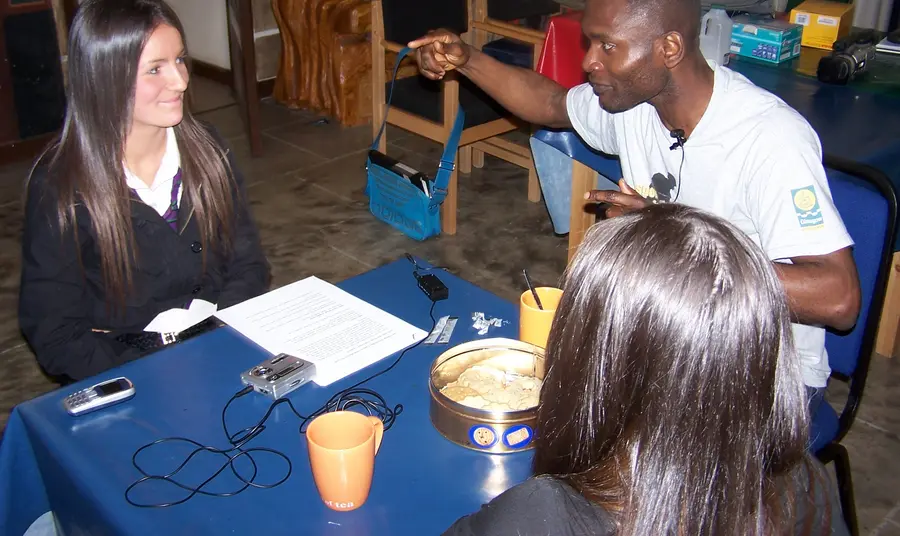
Your Heritage
The Village Storytelling Centre, a Glasgow-based charity, works to empower communities and enable individuals to realise their potential by bringing people together through storytelling. It ran an oral history project focusing on the history of immigration to the Greater Pollok area of Glasgow. The centre aimed to enable present-day asylum seekers and people who lived in the city’s tenements in the 1930s and 40s to find areas of shared experience.
Two Glasgow secondary schools were central to the project. Pupils from Rosshall Academy carried out oral history interviews with adult asylum seekers. Pupils from St Paul’s High School, who were themselves from asylum seeking families, interviewed older people born in Glasgow who had lived in the tenements. A social event was held at the beginning of the project so that the pupils and interviewees could meet each other. This was also an opportunity to share songs, stories and cultural traditions.
Pupils trained in oral history interviewing techniques with Glasgow Museums and the Living Memory Association. The interviews they carried out were filmed and photographed to provide a visual record of the project on a CD-ROM and website. Ten of the interviews were transcribed and published in a book called Doors Open.
The centre worked with Learning and Teaching Scotland to distribute the book and promote the website to secondary schools across Scotland. It also disseminated information to other asylum seekers through integration networks and the Refugee Council.
The pupils followed up on the project by organising trips to enable participants to see places or artefacts that had been covered in the interviews about life in the tenements.
They visited the Plantation area of Glasgow, the People’s Palace museum and the National Trust’s Tenement House.